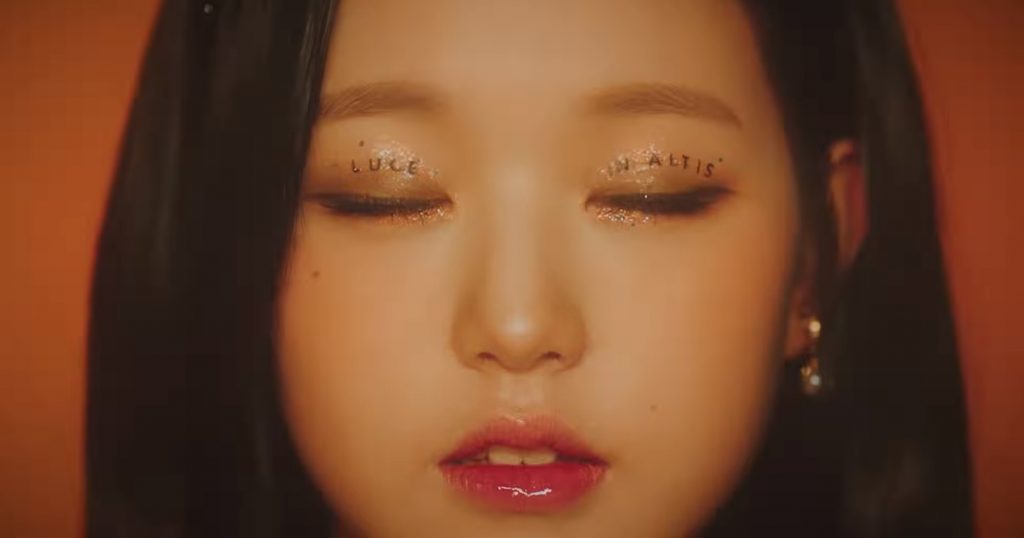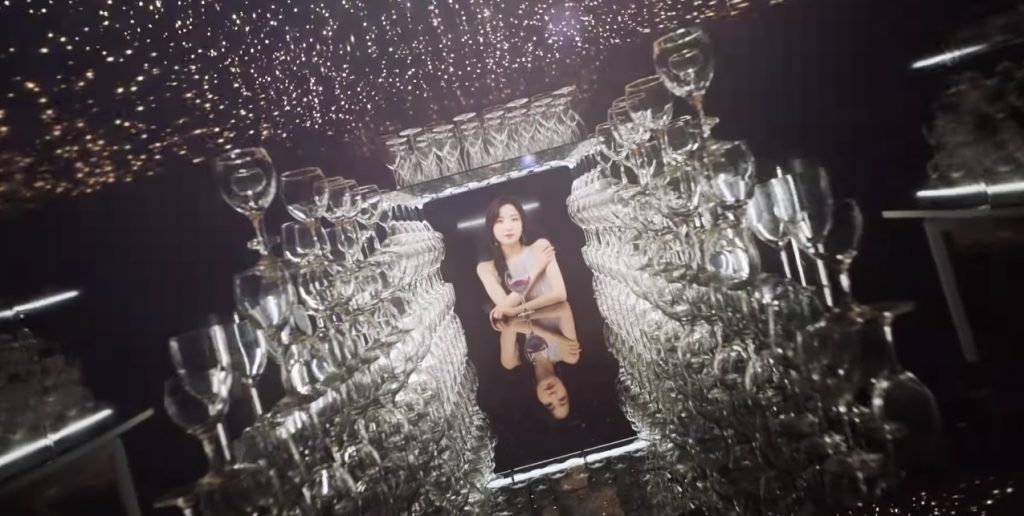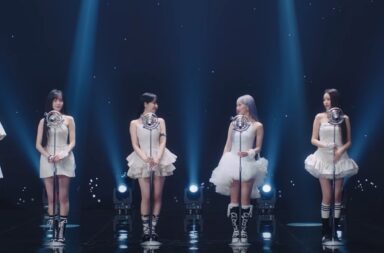“It’s time, after a long wait”
Chaewon‘s starting line in “Fiesta” couldn’t be more appropriate for Iz One‘s latest single, originally teased in November and finally released this week following allegations of vote-rigging by Mnet on its popular Produce series.
It doesn’t really feel like Iz One were really gone (though fans keenly felt their absence) as the 12-member girl group continues building on the soundscape and aesthetic already established in previous Korean singles “La Vie En Rose” and “Violeta”, while introducing fresh and bold new elements.
Breaking from the expected hue-based visuals, the MV is a riot of colour, jewel tones and inky shades battling it out with the ubiquitous softer hues. This is a stark contrast from the aesthetics of the concept trailer. We still see common elements like the patterned fabrics, doors and glasses, but the floral metaphor that Bloom*iz embodies at has been all but replaced.
Many fans are connecting the MV to Roman/Greek mythology, matching each member to a deity. It has been exciting to read these interpretations online, but I have chosen to put forth an alternative theory: that Iz One are taking control and centring themselves in their existence, just as the Sun is the centre of our solar system.
As Iz One sings about “swallowing the sun”, we see members holding spherical items that represent the star. The concept trailer’s swing seat is now a resplendent crescent sun suspended in mid-air. Minju holds a mirror that flashes light. If there is any doubt these are symbols for the sun, there is a recurring pattern of a central object surrounded by eight others, be they glowing orbs suspended from the ceiling, shiny red dots held aloft by backing dancers, or four pairs of arms framing Wonyoung.

Wonyoung is also a vehicle for key clues about the MV’s intent. She is consistently framed by a door (similarly used in the Bloom*iz concept film as she transitions from conformity (symbolised by the giant bow around her waist) to reclamation (with a touch of product placement). As she runs back in through the door, she closes her eyes. Written on the maknae’s eyelids is the Latin phrase Luce in Altis, which can be translated to “light in the deep.”
One way in which we see this play out is with the tunnel of wine glasses leading to Hitomi with dark tresses; behind her, a door opens to a lilac-haired Nako in front of a bright painting. Said artwork is Composition VII by modern abstraction pioneer Wassily Kadinsky. The most famous among his pre-WWI oeuvre, observers have noted how the “hurricane“-like appearance speaks to the idea of redemption and resurrection seen as liberation.
Composition VII‘s influence is seen further in the MV, from the kaleidoscopic colour scheme mixing lights and darks, to the circular imagery that is central to both works, to violence and its aftermath. Alice in Wonderland allusions continue with rabbits and a setting reminiscent of the Mad Hatter’s tea party, hinting at the loss of innocence that often appears to accompany self-awareness. Another is example is Eunbi dancing down a staircase in angel wings as if descending from heaven. It is when she is on the floor of the set that the spotlight shines bright on her.

Fabrics are flung apart and restitched into perplexing combinations, which the members wear as they wave flags and storm a mountain of even more fabric. Chaeyeon rips out the ribbon in her hair before cutting to a shot of her dancing with a larger one. Hitomi drops a yellow, spherical object into her drink.
These actions further showcase losing innocence and regaining control through rejecting the norms and expectations placed upon them. They may be crucified for not conforming, but they will also find their freedom. This transition is also symbolised in the aspect ratio, with a full vertical view becoming widescreen, then full landscape during the bridge.
Before their resurgence, we see the members presented (literally) as shadows of themselves. Yujin parting her skirt to reveal Hyewon as she transitions from silhouette to person is the boldest example of sexuality being harnessed in “Fiesta”; whether it is to signify the members also regaining control over their sexuality, or merely an opportunity for titillation, or both, is perhaps up to the viewer to decipher.
The concept of Bloom*iz is abundantly clear from the concept film alone, but that aesthetic, which worked so well for the previous two entries of Iz One’s flower series, would not have fit with “Fiesta”. The delicate twinkles are still around, but take a back seat to the prominent percussion and brassy synths. Sounds like these call for burgundy over blush, teal over mint, and confetti over petals.
By using Kadinsky’s work as inspiration, Iz One have chaotically freed themselves from an aesthetic that would have started to look tired (even if thematically consistent) and started their own renaissance with a confidence that matches Wiz Ones’ excitement.
“Fiesta” was not what I expected when I saw that concept film, and I am all the happier for it.
(ABC, Art Hive, The Art Story, Popgasa, wassilykadinsky.net. Images via Stone Entertainment)


